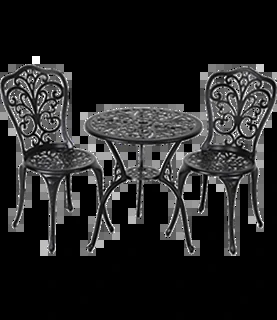Elegant Designs in Decorative Wrought Iron for Your Home and Garden
The Timeless Elegance of Decorative Wrought Iron
Wrought iron has long been a preferred choice in the realm of decorative arts, known for its versatility, strength, and timeless aesthetic appeal. This unique material transcends mere functionality, transforming mundane structures into stunning visual spectacles. Whether gracing a garden gate, enhancing balustrades, or serving as artistic wall adornments, decorative wrought iron embodies a fusion of craftsmanship and beauty, enriching both residential and commercial spaces.
A Historical Perspective
Wrought iron has an illustrious history that dates back to ancient times. Initially utilized for its durability in everyday tools and weapons, artisans began to recognize its potential for decorative applications during the Middle Ages. As European craftsmen honed their skills, wrought iron evolved into a medium for sophisticated designs. The intricate scrollwork and robust construction showcased in Gothic cathedrals and ornate gates defined an era where artistry and functionality coalesced.
During the Renaissance period, wrought iron took on new life as artists began to experiment with elaborate patterns and styles
. The advancements in metallurgy allowed for thinner, more refined pieces, leading to the creation of spirals, leaves, and floral motifs that adorned architecture and functional items alike. This period marked a shift toward decorative wrought iron as not only a construction material but also an essential element of aesthetic expression.Craftsmanship and Techniques
The artistry of wrought iron lies in the exceptional skill required in its fabrication. Unlike cast iron, which is poured into molds, wrought iron is forged and hammered into shape, allowing for greater flexibility in design. Blacksmiths and metalworkers utilize tools like hammers, anvils, and torches to create intricate forms. The process is labor-intensive but results in unmatched artistry, making each piece unique.
Patterns often reflect nature, with designs incorporating organic elements that resonate with the environment. Scrolls, vines, and abstract shapes thrive in wrought iron design, giving a sense of fluidity and elegance. Furthermore, artisans can apply various finishes, such as painting, powder coating, and patination, to enhance durability and aesthetics, ensuring that each creation can withstand the test of time while maintaining its beauty.
decorative wrought iron

Applications in Design
Decorative wrought iron finds its place in numerous design applications, blending seamlessly into different architectural styles. One of the most common uses is in gates and fencing, where it provides security while serving as an eye-catching feature. The intricate details of wrought iron gates often serve as a warm welcome to guests, enhancing the overall curb appeal of a property.
In interior design, wrought iron balusters or stair railings add a touch of sophistication to both modern and traditional homes. Their presence evokes a sense of grandeur and can be tailored to suit individual tastes. Pendant lights and chandeliers crafted from wrought iron also stand out, providing not just illumination but also artistic focal points that draw the eye.
Moreover, outdoor furniture made from wrought iron is celebrated for its ability to withstand the elements. From intricate garden benches to elegant dining sets, wrought iron outdoor furniture combines durability with style, enabling homeowners to create inviting alfresco spaces that reflect their personal aesthetic.
Sustainability and the Future
As the world shifts toward sustainable practices, wrought iron stands out as a highly recyclable material. Its long lifespan and the ability to be reworked into new forms make it an environmentally friendly choice. Artisans today are increasingly adopting sustainable methods, breathing new life into wrought iron by crafting innovative designs that respect tradition while embracing modernity.
In conclusion, decorative wrought iron remains a vital component in the landscape of art and design. Its rich history, coupled with the meticulous craftsmanship involved in its creation, ensures that it continues to enchant and inspire. Whether utilized in architecture, furniture, or ornamental pieces, wrought iron evokes a sense of timeless beauty, proving that even in an age of rapid change, some materials maintain their allure and relevance. In the hands of skilled artisans, decorative wrought iron will continue to thrive, reflecting the creativity and vision of generations to come.
-
Wrought Iron Components: Timeless Elegance and Structural StrengthNewsJul.28,2025
-
Window Hardware Essentials: Rollers, Handles, and Locking SolutionsNewsJul.28,2025
-
Small Agricultural Processing Machines: Corn Threshers, Cassava Chippers, Grain Peelers & Chaff CuttersNewsJul.28,2025
-
Sliding Rollers: Smooth, Silent, and Built to LastNewsJul.28,2025
-
Cast Iron Stoves: Timeless Heating with Modern EfficiencyNewsJul.28,2025
-
Cast Iron Pipe and Fitting: Durable, Fire-Resistant Solutions for Plumbing and DrainageNewsJul.28,2025
-
 Wrought Iron Components: Timeless Elegance and Structural StrengthJul-28-2025Wrought Iron Components: Timeless Elegance and Structural Strength
Wrought Iron Components: Timeless Elegance and Structural StrengthJul-28-2025Wrought Iron Components: Timeless Elegance and Structural Strength -
 Window Hardware Essentials: Rollers, Handles, and Locking SolutionsJul-28-2025Window Hardware Essentials: Rollers, Handles, and Locking Solutions
Window Hardware Essentials: Rollers, Handles, and Locking SolutionsJul-28-2025Window Hardware Essentials: Rollers, Handles, and Locking Solutions -
 Small Agricultural Processing Machines: Corn Threshers, Cassava Chippers, Grain Peelers & Chaff CuttersJul-28-2025Small Agricultural Processing Machines: Corn Threshers, Cassava Chippers, Grain Peelers & Chaff Cutters
Small Agricultural Processing Machines: Corn Threshers, Cassava Chippers, Grain Peelers & Chaff CuttersJul-28-2025Small Agricultural Processing Machines: Corn Threshers, Cassava Chippers, Grain Peelers & Chaff Cutters












